Garmin Forerunner 955 Solar review – Top-tier triathlon watch with all the perks
Garmin's top-tier triathlon watch is more capable than ever thanks to the updated sensors and new multi-system satellite support
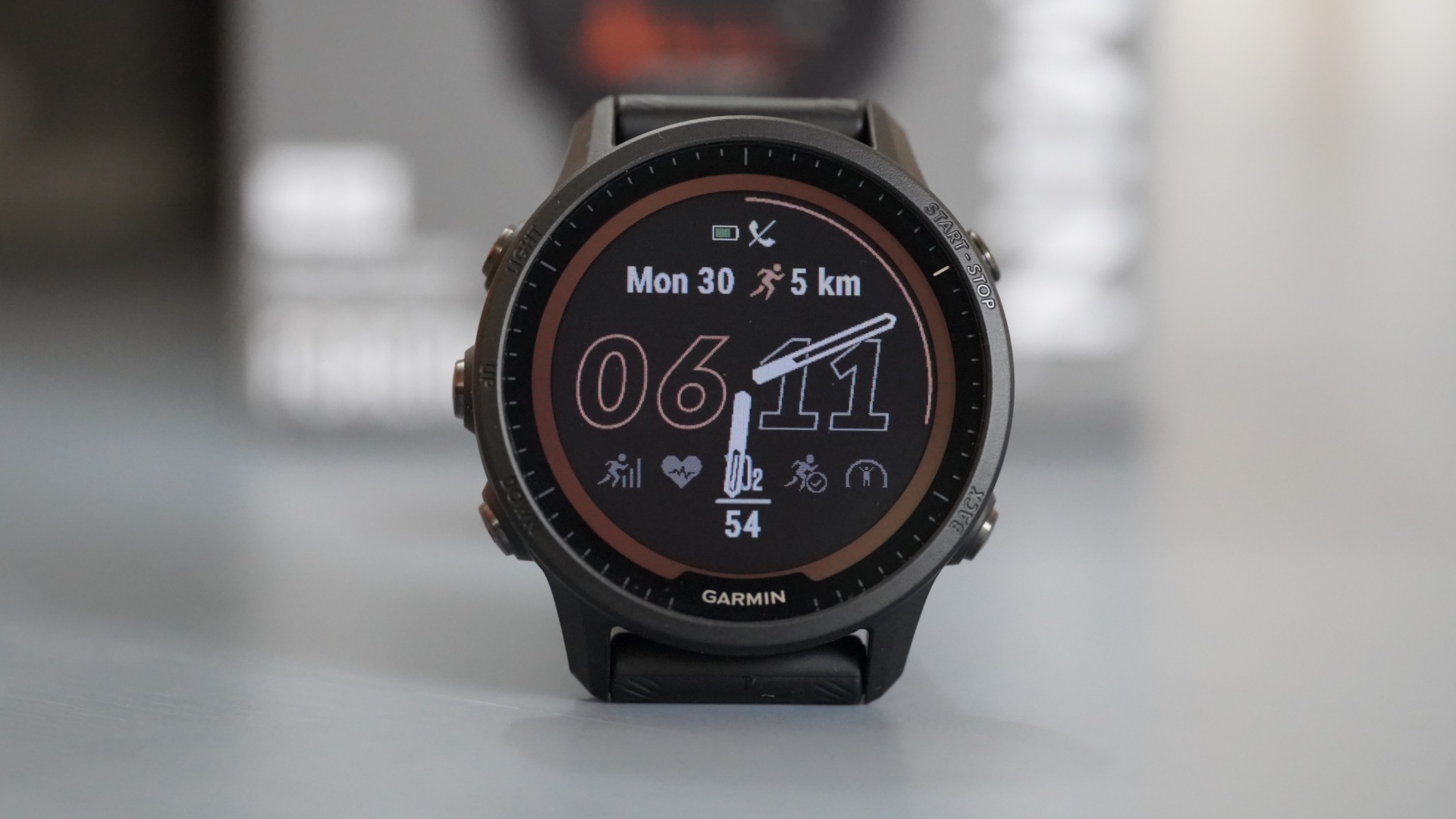
The Garmin Forerunner 955 Solar is a brilliant triathlon watch that offers more accurate heart rate sensor and GPS chip than the Forerunner 945 for almost the same price. The new features make the watch a versatile training partner; a shame it can't measure running power without any external sensors.
-
+
Same price as Forerunner 945
-
+
Touchscreen works well
-
+
Race day widget and tailored daily workout suggestions are great for people who race often
-
+
GPS is super fast
-
+
Updated optical heart rate sensor is accurate
-
-
Battery life is weirdly short, even with solar
-
-
Running power feature requires an external sensor
Why you can trust T3

Garmin Forerunner 955 Solar review TL;DR: The new Forerunner 955 Solar offers a lot more bang for your buck than its predecessor, but it's not without flaws. Hopefully, future firmware updates will doctor the not-so-many issues this excellent tri-watch has at the moment.
I'm a lifelong fan of Garmin's rugged outdoor watches, including the Garmin Fenix 6 Pro and the Garmin Fenix 7X, but even I must admit that when it comes to training (and especially running training), nothing beats the Forerunner line. Mid-range Forerunners, such as the Garmin Forerunner 255S, represent the perfect balance between price and features.
High-end Forerunners, like the Garmin Forerunner 945 and the subject of this review, the Forerunner 955 Solar (and non-solar version), are slightly different. They are some of the best triathlon watches and offer more than what's necessary for training and getting around; they showcase the newest features Garmin has to offer in a lighter package than the Fenix line.
I always thought these wearables were a bit of an overkill. The Garmin Forerunner 955 solar is not quite as overwhelming as the Fenix 7X, but it has many features you won't use, even if you're the most multidisciplinary athlete out there. Yet, I can't stop wearing the watch and checking my Training Readiness score. Is the Garmin Forerunner 955 Solar the best Garmin watch right now? Let's find out.
(I reviewed the latest iteration of the Forerunner 900 series here: Garmin Forerunner 965 review)
Garmin Forerunner 955 Solar review: Price and availability
Available now at Garmin US, Garmin UK and Garmin AU, the Forerunner 955 Solar has a suggested retail price of $600/£550/AU$950. The Forerunner 955 (non-Solar version) is also available now and has a suggested retail price of $500/£480/AU$800.
The Forerunner 945 (retailer link) is still available to buy – there is no solar version of this model – for $600/£500/AU$1,000. In the US and AU, an LTE version of the Forerunner 945 is also available for $650/AU$1,050.
To be able to use the Native Running Power feature on the watch (more on this below), you'll need either Garmin's Running Dynamics Pod or HRM-Pro heart rate monitor (both retailer links).
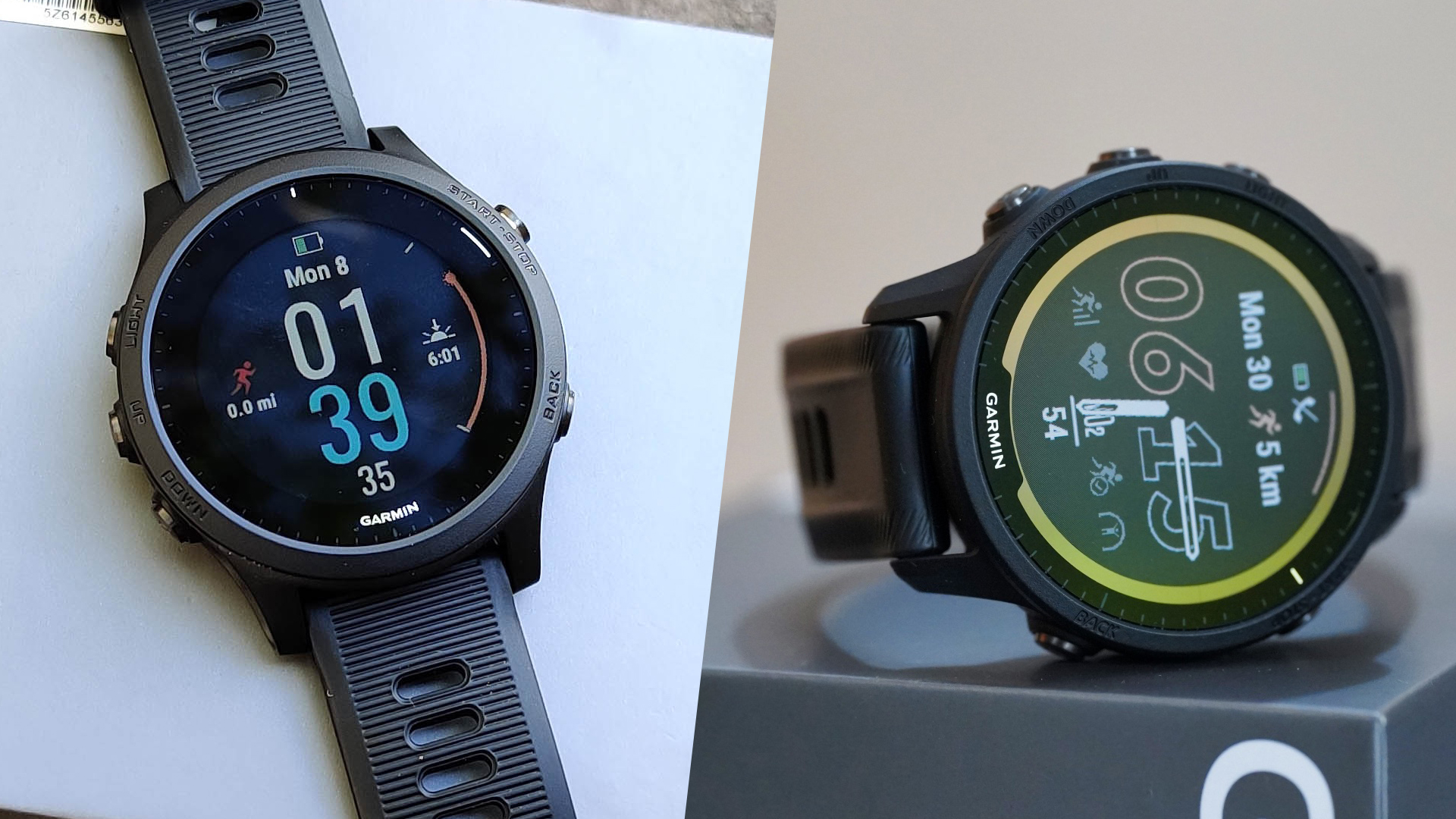
Garmin Forerunner 955 Solar review: What's new?
The Forerunner 955 Solar might look similar to the Forerunner 945, but there are quite a lot of physical changes between the two. The most obvious is the addition of the solar-harvesting Power Glass; you can clearly see the sunlight-sensitive ring around the watch face.
Unlike its predecessor, the Garmin Forerunner 955 Solar has a touchscreen user interface with a widget view layout, similar to the Garmin Venu 2 and the Garmin Epix Gen 2. And just like those two watches, the Forerunner 955 solar features Garmin's latest Elevate heart rate sensor (v4). It also has multi-system multi-GNSS satellite support like the Forerunner 255 (and 255S).
The watch also inherited the real-time stamina feature from the Fenix 7 line, although this is now available on the Forerunner 945 LTE, too.
From a features point of view, the new additions are:
- Training readiness (unique to Forerunner 955 line, for now) – Similar to Training Status but offers an even more comprehensive, proactive view of how ready your body is for exercise. Takes sleep, recovery time, HRV status and additional metrics into account. Read more about it here: How does Garmin's new Training Readiness feature work?
- Morning Report (also available on Forerunner 255) – Allows you to receive the day's weather and daily workout suggestion, as well as information about last night's sleep and HRV status.
- HRV Status (also available on Forerunner 255) – The watch tracks heart rate variability (HRV) while sleeping; it's a good indicator of how ready your body is to work out.
- Native Running Power (also available on Forerunner 255) – Receive real-time metrics of how much power is exerted on a run.
- Race Widget (also available on Forerunner 255) – Allows you to see race prep information, including a race day-specific performance prediction, race day weather and a countdown clock. Once a race is scheduled in the Garmin Connect app, daily suggested workouts will adapt based on your race plans.
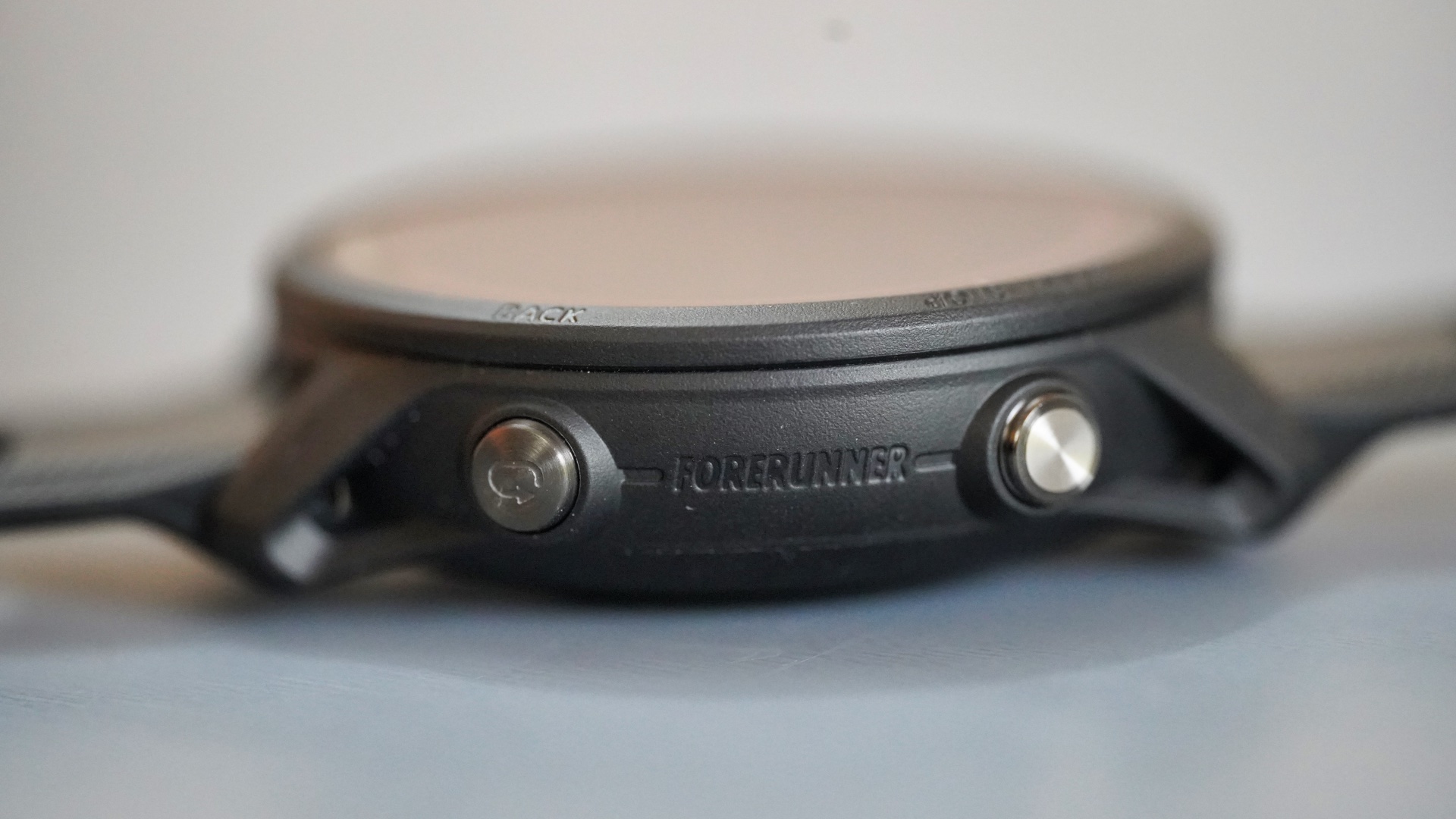
Garmin Forerunner 955 Solar review: Physical design
The new Garmin Forerunner 955 Solar has a larger, more detailed screen than the Forerunner 945, but it's also slightly heavier.
The Forerunner 955 Solar has the standard 5-button layout with three buttons on the left edge of the watch case and two on the right. Sadly, no versions of the Garmin Forerunner 955 come with an AMOLED display, which is especially strange as the Venu 2 mentioned above has a similar display size and is fully AMOLED. Not only the screen of the Venu 2 is brighter, but it also has a much higher resolution (416 x 416 pixels).
The lens, bezel and strap material haven't changed since the Forerunner 945: they are still Corning Gorilla Glass DX, fibre-reinforced polymer and silicone (respectively).
The specs are compared below:
| Row 0 - Cell 0 | Watch case | Display size | Display resolution | Display type | Weight |
| Garmin Forerunner 945 | 47 mm | 1.2" (30 mm) | 240 x 240 pixels | Sunlight-visible, transflective memory-in-pixel (MIP) | 50 g |
| Garmin Forerunner 955 | 46.5 mm | 1.3" (33 mm) | 260 x 260 pixels | Sunlight-visible, transflective memory-in-pixel (MIP) | 52 g |
| Garmin Forerunner 955 Solar | 46.5 mm | 1.3" (33 mm) | 260 x 260 pixels | Sunlight-visible, transflective memory-in-pixel (MIP) | 53 g |
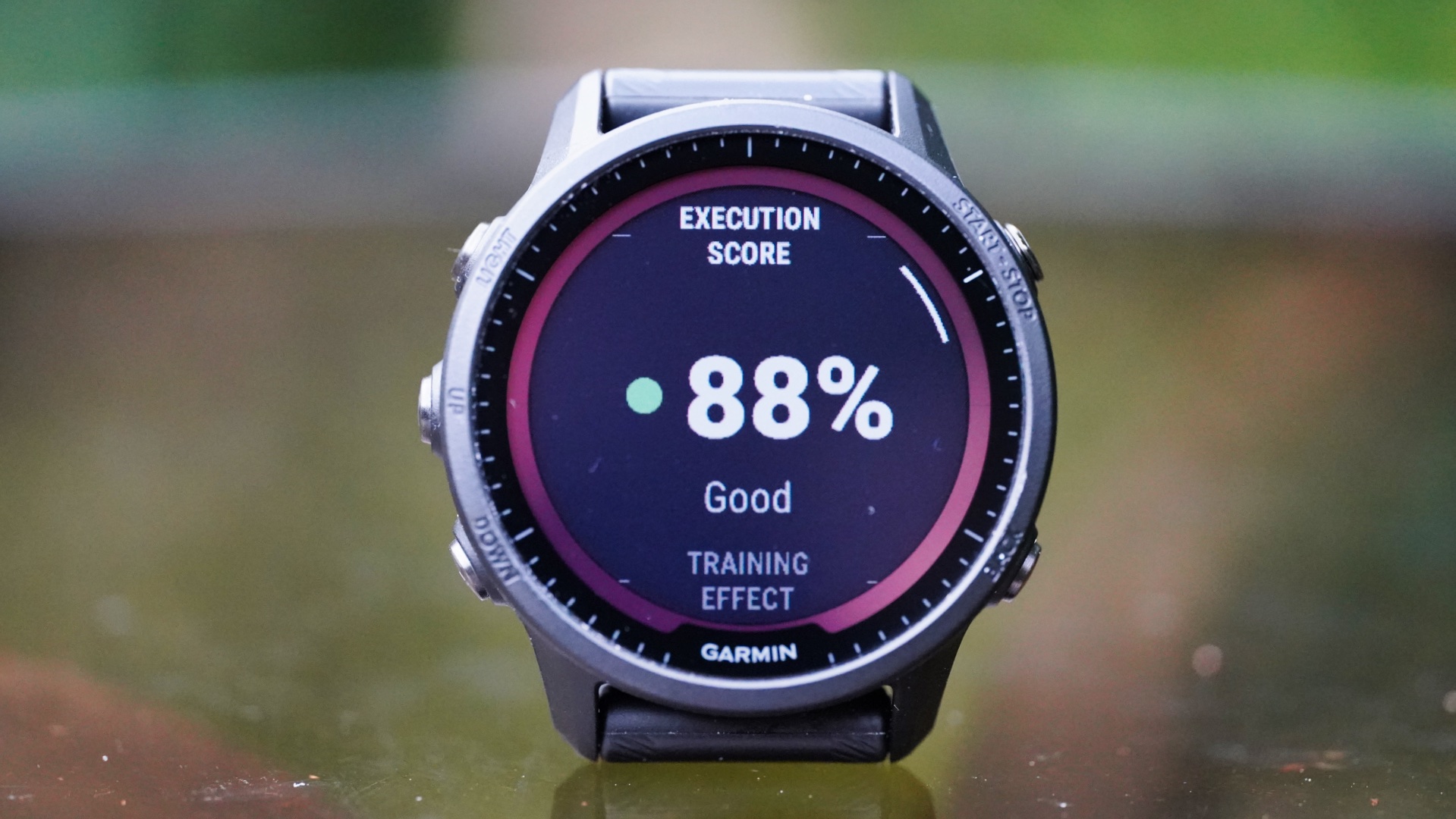
Garmin Forerunner 955 Solar review: Battery life
I thought it might be easier if I made a matrix of the different battery life stats of the three watches, as per below:
| Row 0 - Cell 0 | Garmin Forerunner 945 | Garmin Forerunner 955 | Garmin Forerunner 955 Solar |
| Smartwatch mode | 14 days | 15 days | 15 days/20 days with solar |
| GPS mode with music | 10 hours | 8,5 hours (All-Systems GNSS mode plus Multi-Band) | 8,5 hours (All-Systems GNSS mode plus Multi-Band) |
| GPS mode without music | 36 hours | 42 hours | 42 hours/49 hours with solar |
| All Systems GNSS mode plus Multi-Band without music | N/A | 20 hours | 20 hours/22 hours with solar |
| Ultratrac mode | N/A | 80 hours | Up to 80 hours/110 hours with solar |
[Solar charging assumes all-day wear with 3 hours per day outside in 50,000 lux conditions]
As you can see, battery life has only been improved slightly, although it's worth mentioning that the GPS chip in the new Forerunner 955 series is much better (and power-hungry) than the single-band Forerunner 945. Interestingly, GPS+Music battery life declined; not even solar can help this.
For the review, I used the Forerunner 955 Solar, but I must say, battery life felt rather underwhelming for a top-tier Forerunner. I used the watch for roughly one hour a day for GPS tracking and usually had the Garmin HRM-Pro connected to measure running power; still, I had to charge the watch more than once a week.
Based on my university-level calculations (...), even with that much GPS usage, the Forerunner 955 Solar should have lasted for around 8-9 days. I appreciate I didn't expose the watch to nearly enough sunlight for it to make a difference, but still, I expected a bit more. I haven't had blood oxygen on and used the watch sparingly; not sure what 'drained' the battery.
Maybe it's due to the features not being optimised yet; who knows. I hope future software updates might doctor this.
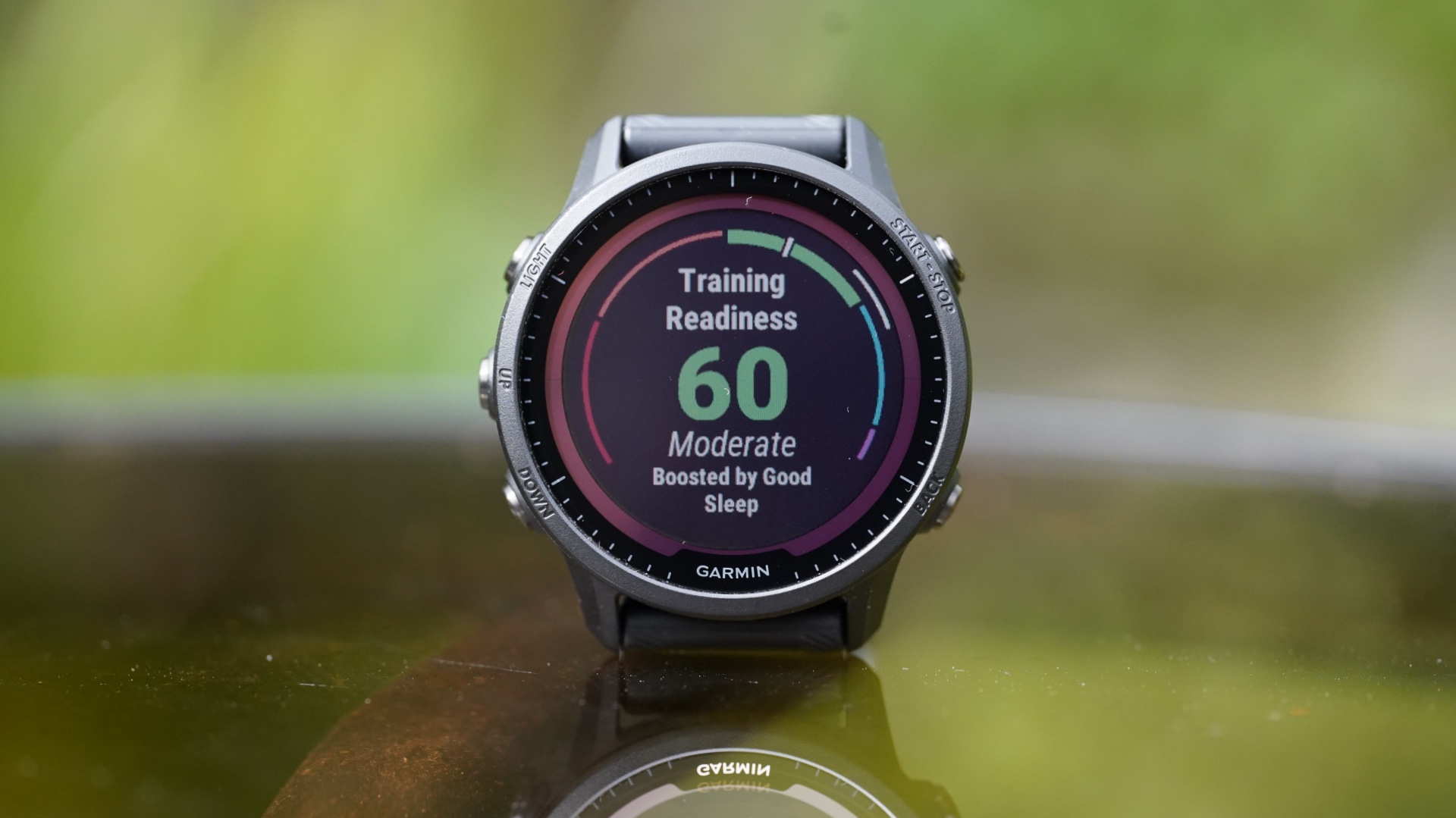
Garmin Forerunner 955 Solar review: Features
The Garmin Forerunner 955 Solar comes with all the smart, health and fitness features under the sun, including all the features of the Forerunner 945.
These include 24/7 heart rate tracking, sleep tracking, stress tracking, VO2 max estimations, training status reports, smart notifications, weather reports, quadrillion sports modes, step counter, blood oxygen measurements, Body Battery... and so on.
I've already talked about heart rate variability (HRV) in my Garmin Forerunner 255S review (and even more in my Whoop 4.0 review) so if you're interested in that, click on one of the links and read on. A feature that's currently unique to the Forerunner 955 Solar (and non-Solar) is the Training Readiness.
I also talked about this new feature at length (the link can be found above), but to recap: the Forerunner 955 can estimate how ready your body is for exercise based on sleep, stress, HRV and training load. This feature finally addresses one of my biggest Garmin watch frustrations, namely that there are too many features working separately from each other.
It's great that the Forerunner 945 offers the Body Battery and Training Load features, but it can't tell you how these affect your body when combined. Training Readiness brings it all together and replaces many separate metrics with one number, making it more understandable for simple people like me how hard can I exercise.
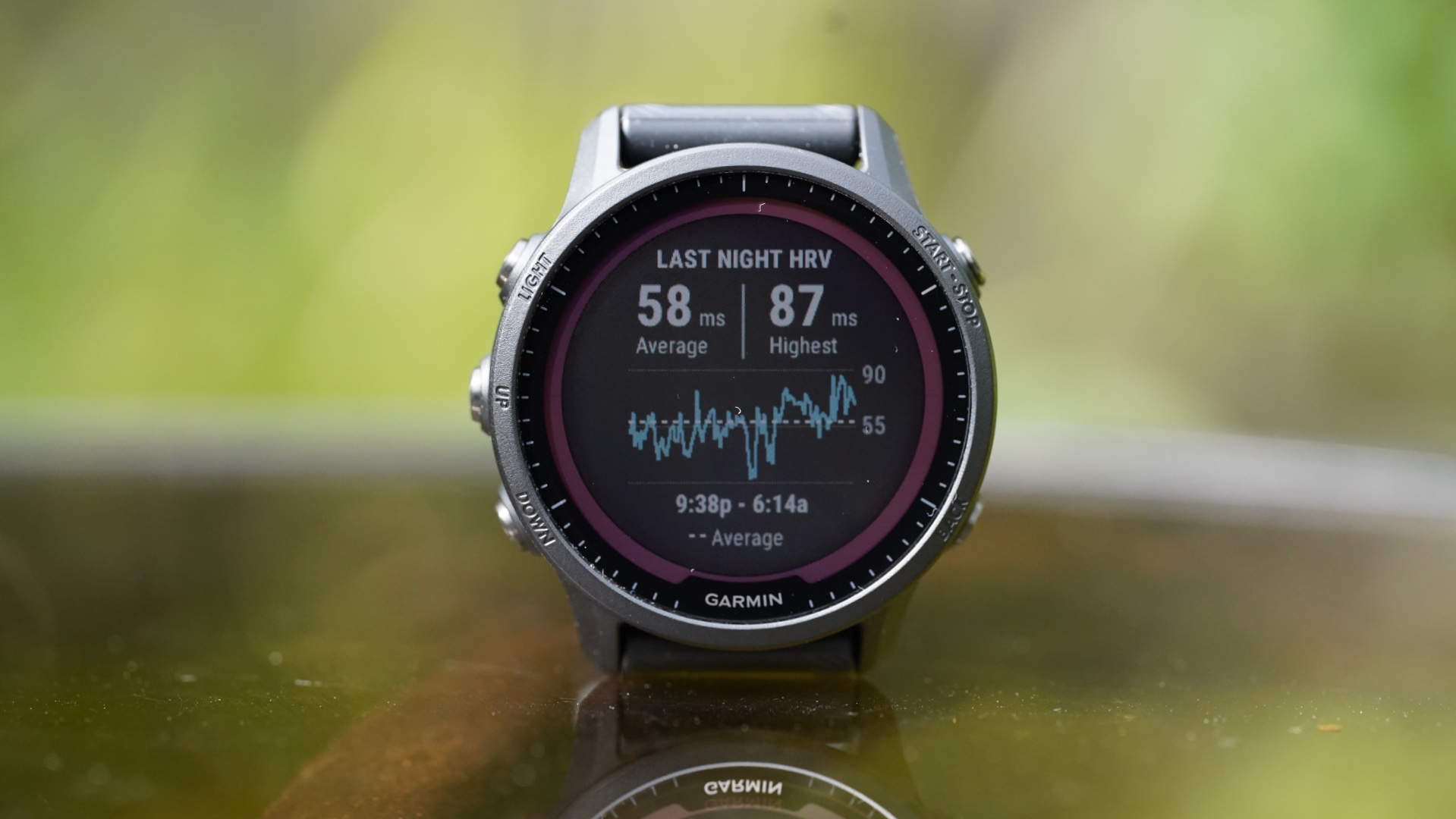
Garmin Forerunner 955 Solar review: Heart rate sensor accuracy
I found it hard to benchmark the heart rate accuracy of the Forerunner 955 Solar, mainly because it uses the same Elevate v4 sensor found in the most recent cohort of Garmin watches, the ones I use for checking heart rate sensor accuracy on other watches.
That said, I went out for quite a few runs wearing several different wearables, including the Polar Pacer Pro, COROS Pace 2 etc., to see how they compare to the Forerunner 955 Solar. I also benchmarked it against optical heart rate sensors such as the Polar Verity Sense, just in case.
Not surprisingly, the Garmin forerunner 955 Solar is one of the most accurate wearables I have worn in recent times and is definitely on par with the Garmin Fenix 7X. If anything, the readings seem a bit more accurate thanks to the Forerunner 955 Solar being lighter than the Fenix 7X, making it sit better on the skin.
If you want to make sure your heart rate readings are as accurate as possible, I still recommend investing in a heart rate monitor, especially in the HRM-Pro: it not only provides you with bang-on heart rate stats but also running power and other advanced running metrics.

Garmin Forerunner 955 Solar review: GPS accuracy
The Garmin Forerunner 955 Solar picks up GPS signal incredibly fast. And I mean fast. I step outside the house, turn the run mode on, and two seconds later, the GPS is locked on. I remember, even a few years ago, you had to wait a good 15-30 seconds for the GPS chip to latch onto the signal; those days are gone.
GPS accuracy is okay. It's better than okay but not perfect. I tested the watch in parks and the city; in the former environment, the watch struggled a bit with real-time pace readings.
For example, I did plenty of Daily Workout Suggestion sessions where you have to run at a certain pace for a specific timeframe. On one occasion, the watch asked me to run for one minute at a 3:40 min/km pace. Throughout that one minute, it kept saying my pace wasn't fast enough (real-time pace), but when it gave me the overall pace for the segment, it was actually under the target.
This happened under some tree foliage; this might be the reason for the poor pace readings. However, you'd think the multi-system GNSS support is there for precisely this reason; to strengthen the signal when the satellite visibility isn't excellent. I'm not an engineer, so I could be wrong (I probably am), but I expected even better results from the Forerunner 955 Solar.
The route is accurate on the map, at least, with only a few instances of inaccuracies. And again, GPS is super fast, so there is that.
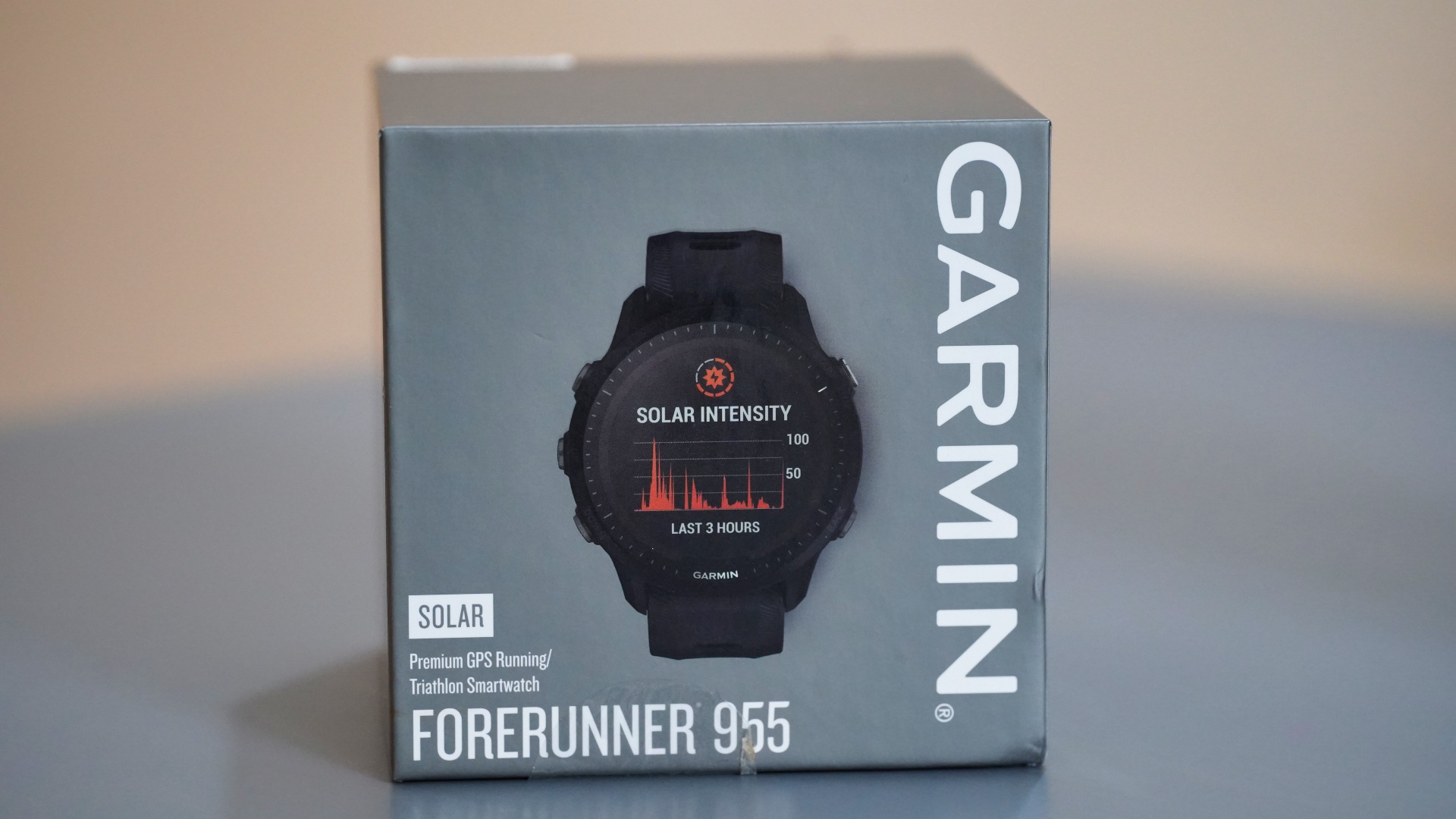
Garmin Forerunner 955 Solar review: Verdict
The Garmin Forerunner 955 Solar is a huge update from its predecessor. It offers a lot of extra features and newer sensors for almost the same amount of money you had to pay for the Forerunner 945.
From a physical point of view, the Forerunner 955 Solar looks very familiar but adds a bigger screen with better resolution and, of course, the solar-harvesting Power Glass, which can help extend battery life, should you spend enough time training outside.
Interestingly, even with solar charging, battery life seems way too short for a top-tier watch, whether it's because the battery is being 'drained' by the many features of the watch or perhaps Garmin needs to optimise things a bit more; hopefully, future firmware updates amend this issue.
Some of the new notable (possibly battery-draining) features include the currently Forerunner 955-exclusive Training Readiness (gives you a score on how ready your body is for training on a scale of 0-100), Morning Report (a recap of sleep/HRV stats, plus workout suggestions) and the handy Race Day Widget (which also tailors Daily Workout Suggestions).
Not all new features are mind-blowing or even brand new, but all add to the overall feature-richness of the Forerunner 955 Solar. Add in the new sensors and GPS chip, and you have yourself a fantastic triathlon watch that's a must-buy for any self-discerning triathlete.
Garmin Forerunner 955 Solar review: Also consider
For any non-diehard runners, cyclists and triathletes, the Garmin Forerunner 255S (or the standard-sized Forerunner 255) is a better option. It's cheaper and has both the new optical heart rate sensor and the new multi-band GNSS support as well as the HRV feature. It's the perfect balance between price and feature, as long as you can live without the AMOLED display.
The Garmin Fenix 6 Pro is an older watch (older OHR and GPS) but it's still a superb multisport watch option. The Pro has a more premium build (especially the Titanium option) and continuously received updates – an excellent choice if you need a capable Garmin that looks good on the wrist.
Sign up to the T3 newsletter for smarter living straight to your inbox
Get all the latest news, reviews, deals and buying guides on gorgeous tech, home and active products from the T3 experts

Matt Kollat is a journalist and content creator who works for T3.com and its magazine counterpart as an Active Editor. His areas of expertise include wearables, drones, fitness equipment, nutrition and outdoor gear. He joined T3 in 2019. His byline appears in several publications, including Techradar and Fit&Well, and more. Matt also collaborated with other content creators (e.g. Garage Gym Reviews) and judged many awards, such as the European Specialist Sports Nutrition Alliance's ESSNawards. When he isn't working out, running or cycling, you'll find him roaming the countryside and trying out new podcasting and content creation equipment.
-
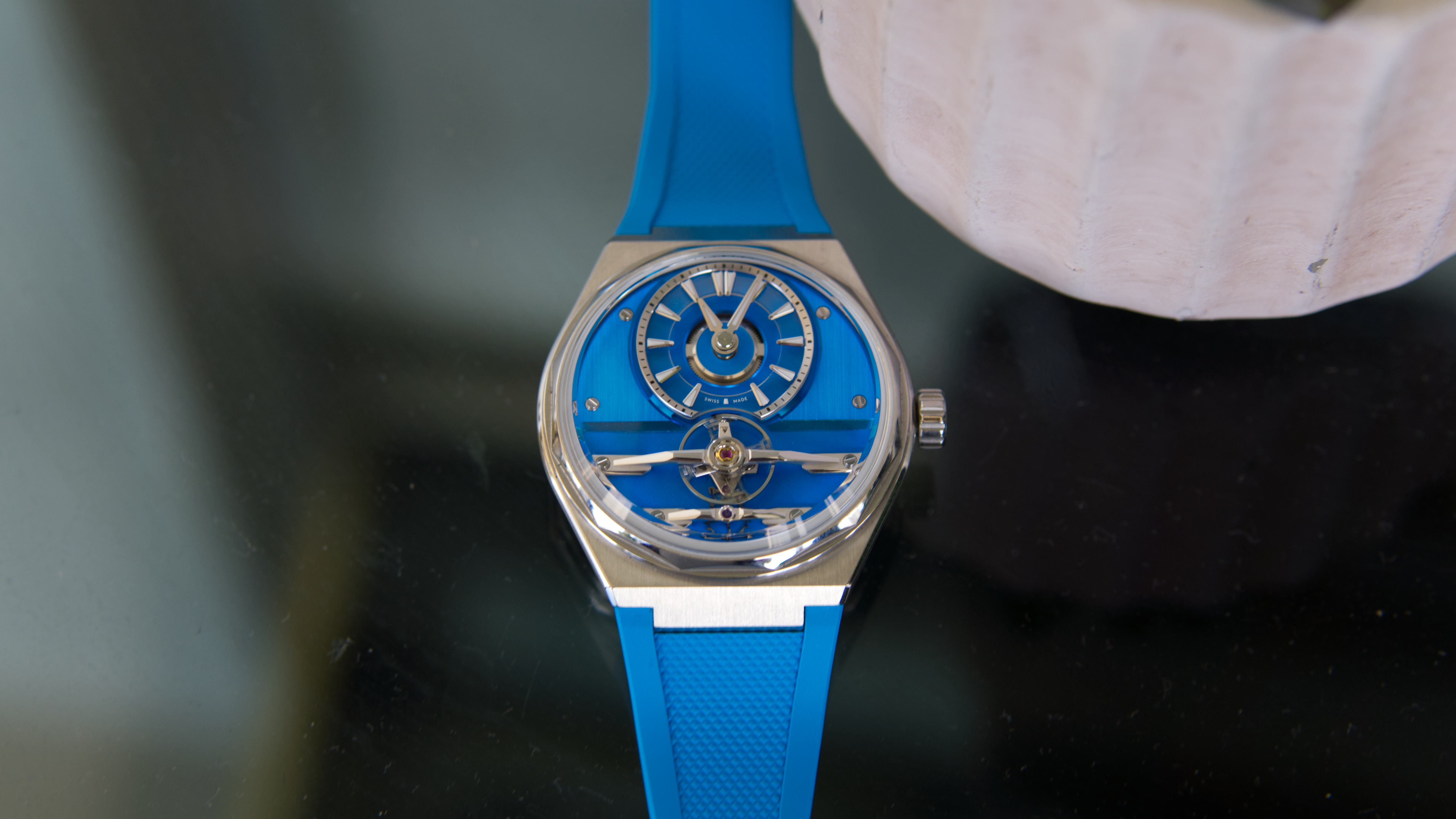 New Christopher Ward C12 Loco marks the dawn of a new era for the brand
New Christopher Ward C12 Loco marks the dawn of a new era for the brandIt features a new movement and an open balance
By Sam Cross Published
-
 Instagram Edits is now available for iOS and Android, free and can do cool stuff – but what is it?
Instagram Edits is now available for iOS and Android, free and can do cool stuff – but what is it?Here's everything you need to know about Instagram Edits and how to sign up
By Britta O'Boyle Published
-
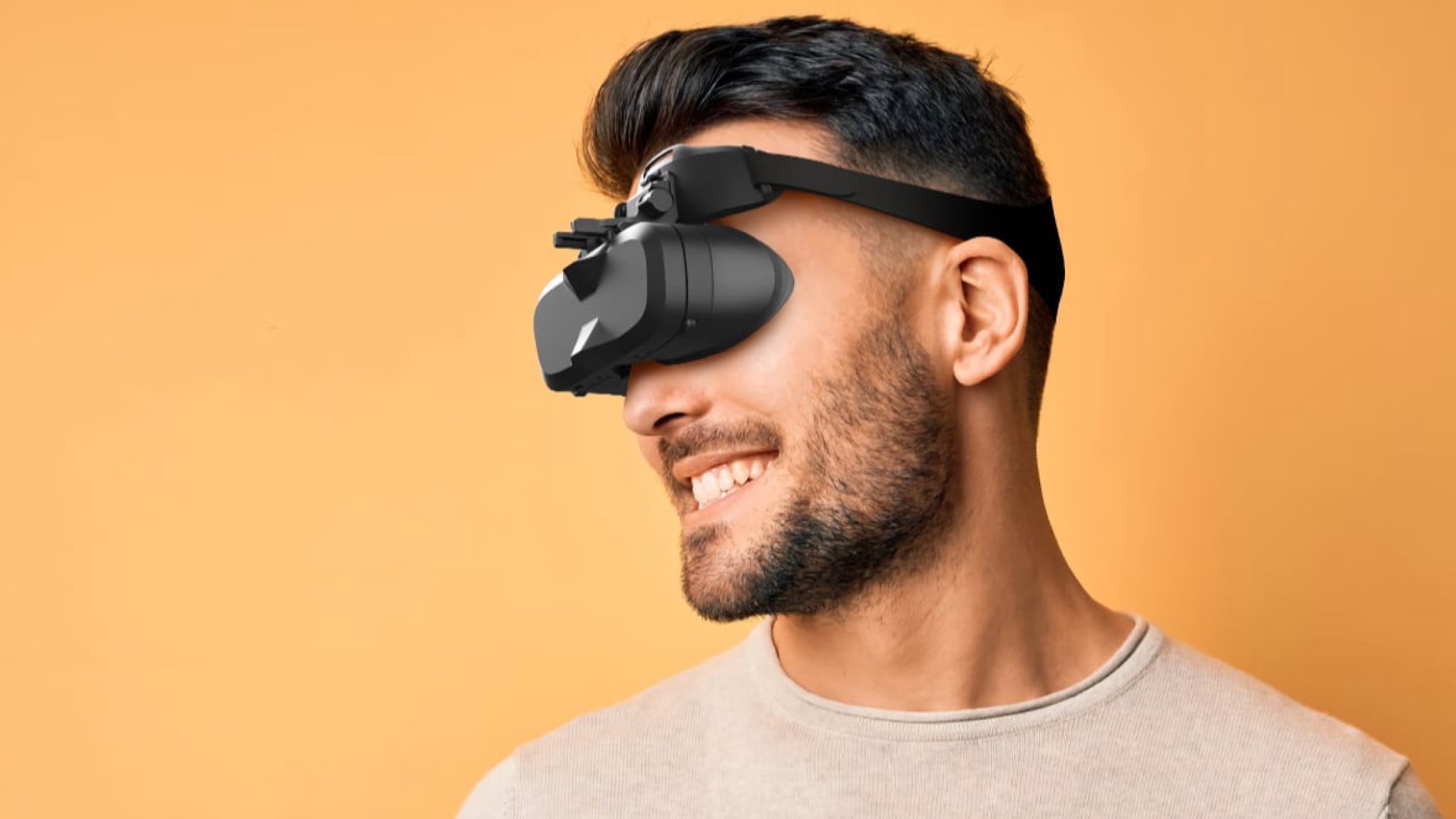 Apple Vision Pro just got serious competition from micro-OLED headsets with better specs
Apple Vision Pro just got serious competition from micro-OLED headsets with better specsApple's stunning displays just got bettered by two companies you've probably never heard of
By Carrie Marshall Published